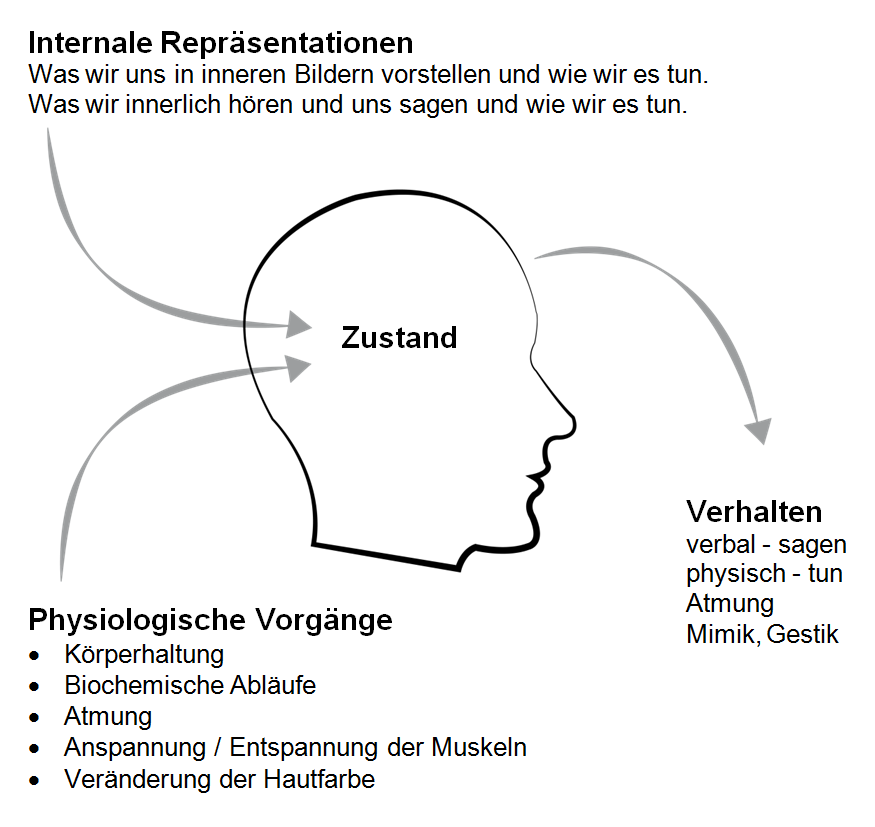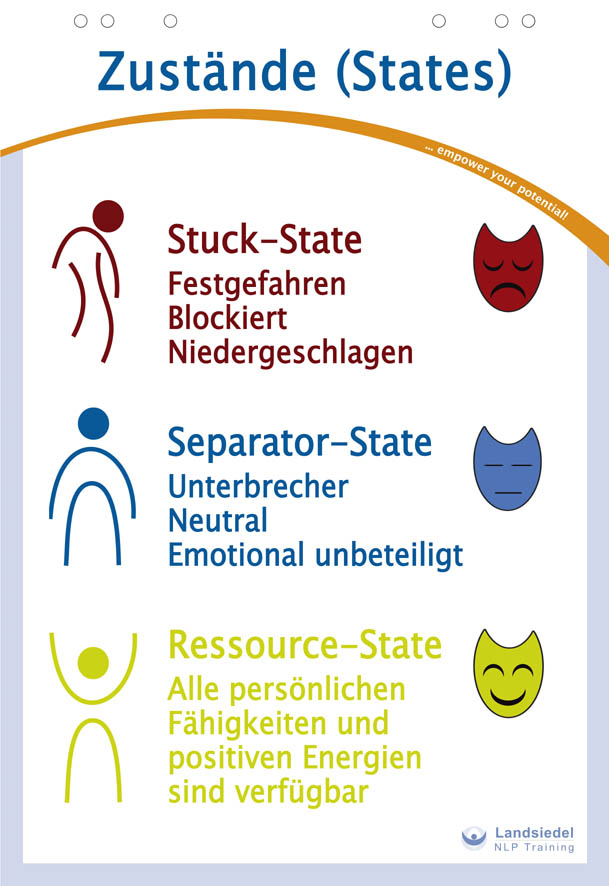State Management and Internal Representation
State Management
The ability to influence our emotional states is crucial in life. It allows us to overcome fear and stress and to generate positive emotions such as love, confidence, and motivation within ourselves.
Definition
A state is the sum of all neurophysiological processes taking place within us at a given moment. In NLP, a state refers to a temporary condition (mood or mindset) that manifests in both physiology and feelings. We experience the world through our senses. External stimuli — such as a ray of sunshine or a friend’s voice — are transmitted through our nervous system as electrical and chemical signals to the brain, where they are transformed into images, sounds, and sensations that represent the external event.
In our Online Academy, you can find a 75-minute webinar recording on this topic. Click the button “Go to Video” to watch it in full.

Internal Representation
Our behavior depends strongly on our current state, which is influenced both by our internal representations and our physiology. This means that you can change your state by imagining something different or by altering your body posture and breathing.
Resource State, Stuck State, Separator State
In NLP, three primary states are distinguished:

Being in a resource state means that all personal strengths and positive energies are available and accessible. This is usually associated with feelings of power, joy, and confidence.
A stuck state is a blocked or stressful condition in which resources are not perceived or accessible. It often arises from specific triggers or anchors. When such an anchor is activated (e.g., someone raises their voice), an unwanted state (e.g., feeling small or powerless) emerges.
The separator state refers to a neutral or emotionally detached condition used to interrupt or shift from one state to another.
Stuck State
Literally translated, “stuck state” means a fixed or rigid condition — a problematic state in which a person feels trapped. Stuck states are often characterized by specific physiological reactions and triggers. The goal of NLP change techniques is to transform stuck states into empowering resourceful ones. These techniques use physiological shifts, internal imagery, and anchoring methods to create flexibility and positive emotional control.

 Deutsch
Deutsch English
English Français
Français 中文
中文 Español
Español नहीं
नहीं Русский
Русский